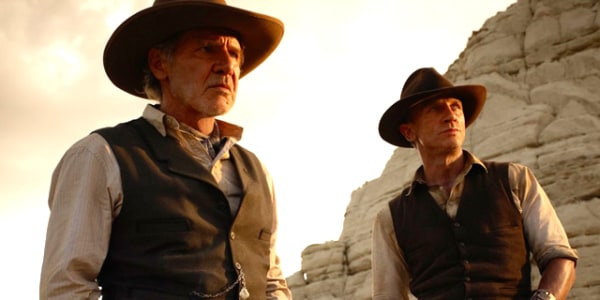"Rejoice and Shout" is probably the first documentary to look comprehensively at the 200-year musical history of African-American Christianity -- which is to say gospel music -- and may well be the last.
It certainly doesn't seem as if director Don McGlynn or his producer, Joe Lauro, who owns a vast collection of old records and music film footage, missed anything significant. The documentary is exhaustive in its compilation of the major acts and personalities in gospel music -- to the point the narrative thread almost gets buried under the weight of names, dates, musical styles and vintage performances.
For anyone with a keen interest in this unique American musical form, "Rejoice and Shout" is a must-see and see-again. It's also a must-have for the home libraries of gospel-music enthusiast.
Slideshow 22 photos
Summer's upcoming blockbusters
McGlynn situates this history in the deep-rooted, hardcore religious beliefs of black American Christians and in the highly participatory Pentecostal church services. The historians and artists who accompany the viewer on this tour of musical history speak first of their abiding faith in the Almighty and the spiritual and communal joy of church-going. Then they talk about the music they grew up with.
Smokey Robinson of Motown Records fame declares that what is called gospel music today began as "plantation music" of the slavery era. Historian Bill Carpenter notes that in the 1800s slave owners brought their human chattel into the Christian church -- a "civilizing" influence, they thought -- and the slaves in turn brought an African sense of music -- the drums and call-and-response -- to the songs that developed first in church and later out in the field to ease the back-breaking labor.
Other voices fill in the story -- Ira Tucker of the Dixie Hummingbirds; Marie Knight, who seems to have known everyone in gospel music including Sister Rosetta Tharpe and Mahalia Jackson; Mavis Staples of the Staple Singers; Andrae Crouch, who became a pastor himself; and another expert and author, Anthony Helibut.
The first to record the early hymns and spirituals were four-part-harmony quartets. But Helibut makes the interesting point that you can always tell the difference between a white barbershop quartet and a black one: In the black one, each voice has an individual sound.
The music evolved along with the times and musical styles. Mavis Staples herself came to the realization fairly late in her family's career that while everyone was singing gospel, her dad was actually playing blues on his guitar. Then the civil rights movement caused Pops Staples to incorporate Freedom songs and even Bob Dylan into the family act.
While more secular elements such as blues, swing, soul and even rap and hip-hop have found their way into gospel but lyrics always stay on message -- the Lord is praised and the Gospel is preached to a community that has suffered much in its American experience.
Along with the key artists, the film's commentators celebrate those transformative figures who wrote the music and mentored others such as Thomas A. Dorsey, a "devil" within the community though since he penned "filthy" lyrics for the nightclub as well as church songs, and Rev. James Cleveland, who helped train a young singer named Aretha Franklin in Detroit before becoming a Los Angeles-based choir leader who traveled the country to raise the level of excellence from town to town.
The 115-minute film contains an hour of vintage musical performances. That these exist at all is a miracle right up there with crossing the Jordan River into the Promised Land. Thus, "Rejoice and Shout" is almost as much a concert film as a documentary.
But for a documentary about the music business, this one contains almost no sense of celebrity. It's not just, as Ira Tucker Jr. notes, that there was never any separation between the artist and the audience in a black church. The key thing is that these artists, whether performing in church or a concert hall, were and are church people. The goal is not a record contract -- although most of those mentioned here achieved that. The goal was to rejoice and shout the praises of God.
Frank Axelsen's editing skillfully weaves the talking heads in and out of the vintage footage and ancient recordings going back over a century. The cinematography for the modern singing and interviews, however, is merely perfunctory.
